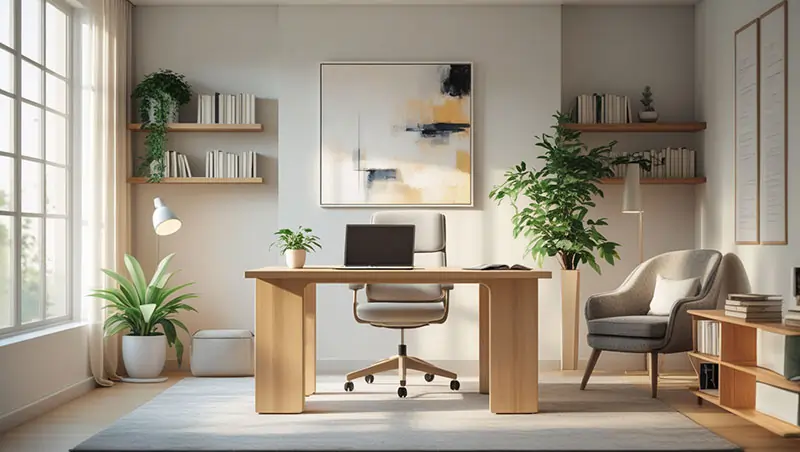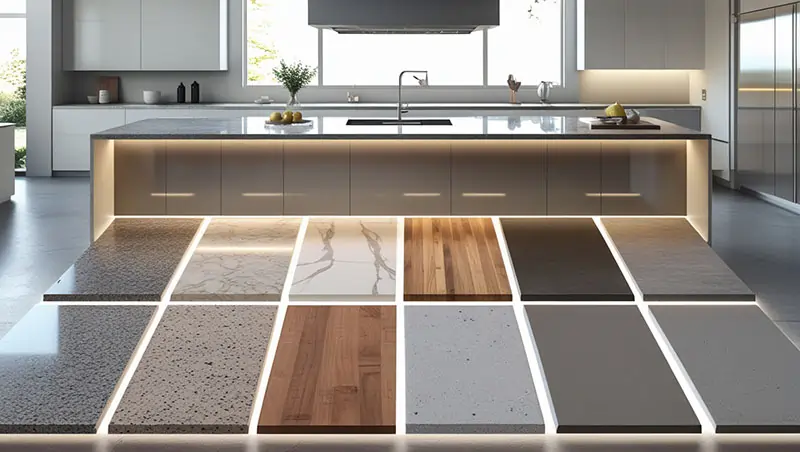Home Offices That Actually Inspire Focus and Calm
The home office has become an essential space for many, especially as remote work becomes more common. How a workspace is set up can seriously affect productivity and comfort. A well-designed home office isn’t just about decoration—it creates a space that supports creativity while keeping distractions away.
Balancing different design elements can make a workspace feel both inviting and productive. Everything from the materials and furniture you choose to how lighting and sensory details come together shapes how well you work and feel in your space.
Why Placement and View Matter More Than Square Footage
A home office’s location plays a big part in how useful it is. A workspace tucked into a dark corner lacks the energy of one on an upper level, where natural light and views are easier to enjoy. Windows that look out on trees or peaceful scenery do more than just look nice—they can lift your mood and spark ideas. Putting a desk near a window like this can help you focus and make everyday tasks feel less draining.
Utilizing beautiful views in office space is a huge advantage. For example, a Pacific Palisades architect can incorporate thoughtful details that connect your workspace to the outdoors, making the room feel more open and inspiring. Letting in natural light helps clear your mind and encourages creative thinking. One easy trick is adjusting window blinds or curtains throughout the day to let in more daylight without losing privacy or comfort.
Material Choices That Subtly Influence Your Thinking
Choosing the right materials can change how your office feels. Smooth wood surfaces bring warmth, and soft fabrics make the room feel cozy. A wool throw on your chair or linen curtains on the windows can add comfort without making the space feel heavy. Put together, these details can create a calm setting, even if your day is hectic. Using natural materials adds to this peaceful feeling and helps you stay focused.
Muted colors on walls and desktops help keep your mind from wandering. Adding touchable items, like a nicely made wooden desk or a comfy chair, can keep you grounded and focused. Look for materials that are pleasant to touch—they can give your creativity a little push while keeping the space calm.
Furniture That Works with the Brain Not Just the Body
The right furniture does more than support your body—it shapes how clearly you think and how easily you settle into work. A solid wood desk adds character and creates a sense of presence that draws you in. Storage that blends with your style keeps the room feeling open, not chaotic.
A task chair with proper support can reduce tension and help you stay grounded during long hours. Look for pieces that fit your space and feel good to use, so your office becomes a place you want to return to—not just somewhere you have to be.
Lighting That Supports Mental Rhythm Not Just Visibility
Lighting can do more than just help you see. It sets the mood of the room and affects how well you can focus. Soft, indirect lighting creates a peaceful vibe and helps reduce eye strain. A small floor lamp with a fabric shade can add gentle brightness without feeling harsh. Warm lights help you stay calmly focused, which is especially helpful if you’re working long hours.
Adjustable task lamps give you control, letting you aim light right where you need it for reading or designing. These lights can change throughout the day to match your needs. Using dimmable bulbs helps you move from one task to another while keeping a steady and peaceful environment.
Scent and Sound as Functional Design Tools
Smell and sound can shape how focused you feel. An essential oil diffuser can fill the air with scents like lavender or eucalyptus, which help you relax during stressful moments. These scents can also refresh your brain when energy dips, helping you stay clear-headed and less stressed.
Sound matters too. Background sounds like soft nature noises or white noise can help you stay on track and block outside distractions. A sound machine or app can improve your ability to concentrate. Try different sounds to see what works best for your working style.
A great home office isn’t just about looks—it’s about how the space makes you feel and think. Desk placement, warm textures, thoughtful lighting, and subtle sensory cues all work together to support your focus and comfort. Even small shifts, like changing a lamp or adding a diffuser, can make a noticeable difference. Instead of aiming for perfection, start with what feels right. What part of your space could use a little care today? Maybe that’s where your next great idea will come from. A space that supports your energy doesn’t have to be big—just intentional, personal, and a little bit yours.
Bonus Tip: A Kid-Friendly Corner in Your Home Office
Setting up a small, inviting space for kids to work in or near your home office can be a great way to get them to study and be creative. A special place, like a desk with colorful supplies or a cozy reading nook, makes kids feel welcome and inspired. When kids see adults doing things, they learn the importance of focus and responsibility. Having their own quiet space also helps them concentrate better on schoolwork, art, or educational games. A well-planned mini home office for kids can make them curious, help them become more independent, and make learning a fun part of their daily lives.


